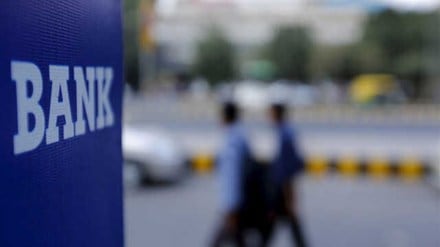With the US imposing a steep 50% tariff on Indian exports, Indian banks are sounding the alarm over the broader implications for merchandise trade. While the initial blow has landed on goods, senior bankers warn that the ripple effects could be far more damaging than anticipated, especially for sectors that form the backbone of India’s export economy and employment engine.
“The real concern is not just one sector such as textiles or gems. But we are talking about sectors that contribute billions annually and employ millions. The vulnerability is systemic, as it could have consequences on India and its growth,” said a senior banker at a leading private sector bank.
MSMEs under mounting pressure
While the current tariff targets merchandise exports, bankers are preparing for a broader contagion. “The situation is fluid. We are seeing early signs of stress in MSMEs, but the real risk lies in the potential extension of tariffs across more categories. If sanctions deepen, the impact will be far deeper and longer-lasting,” said a senior official at a state-run bank.
Among merchandise exporters, sectors like shrimp, textiles, leather, and gems and jewellery are already under scrutiny. Textile players, in particular, are initiating cost-cutting measures and shifting their focus to domestic markets, raising concerns about job losses. According to CareEdge Ratings, Indian textile and apparel exports to the US in CY26 could decline by 9–10%, with profit before interest, lease, depreciation and tax (PBILDT) falling by 300–500 basis points.
“Many buyers pre-stocked ahead of the tariff hike, which may cushion the blow temporarily,” said a senior PSU banker. “But that’s a short-term buffer. The structural impact will unfold over the next 6 to 12 months.” Meanwhile, banks are re-evaluating their underwriting criteria in response to the US tariff, considering the potential impacts on credit risk, liquidity, and interest rate risk. “We are factoring in exporters’ US exposure when assessing underwriting risks,” stated a senior PSU banker.
In contrast to large corporates, MSMEs remain especially vulnerable. Defaults have already begun in timber and steel exports, but bankers view these as early indicators rather than the main event. “We are seeing some payment stress in timber and steel MSMEs. It’s manageable for now, but it signals what may lie ahead,” said a senior public sector banker who is worried about the textile sector due to many smaller units associated with the industry. “The textile sector has built huge additional capacity and is therefore a worrisome area. We may even see them compromising on margins and shifting focus to the domestic (Indian) market,” he added. He believes banks may see payment defaults due to the stress coming from MSME textile units.
Policy response and RBI’s stance
Many believe the government may step in to protect manufacturers, especially MSMEs. Unlike large corporates, MSMEs lack the resources to make quick adjustments. The Reserve Bank of India is closely monitoring the situation. Speaking at the FIBAC 2025 event in Mumbai last week, RBI Governor Sanjay Malhotra assured that the central bank stands ready to intervene. “We will not be found wanting in our job,” he said, adding that while inflation remains a priority, the RBI “has not lost sight of growth amid uncertainties.”
Bankers say the coming months will test the resilience of Indian exporters and the agility of policy response. “This is not just about trade. It’s about how India recalibrates its export strategy across goods & services,” said a senior banker. “Diversification is no longer optional.”
